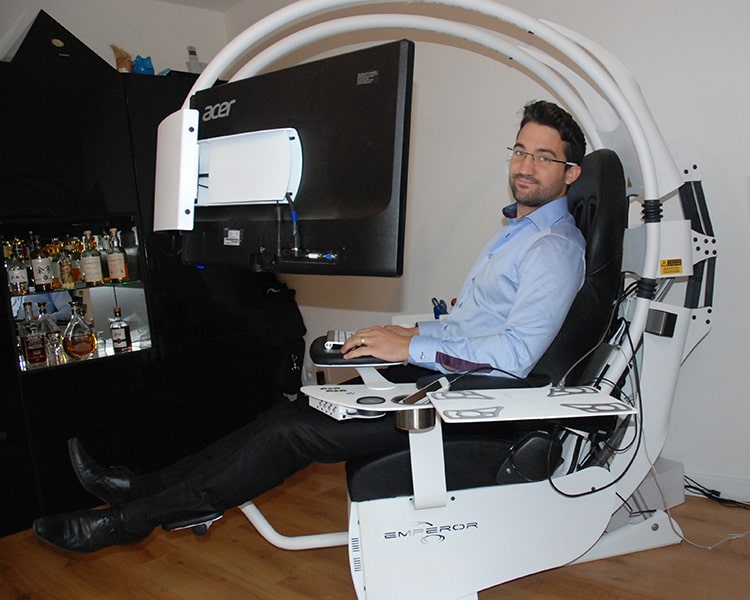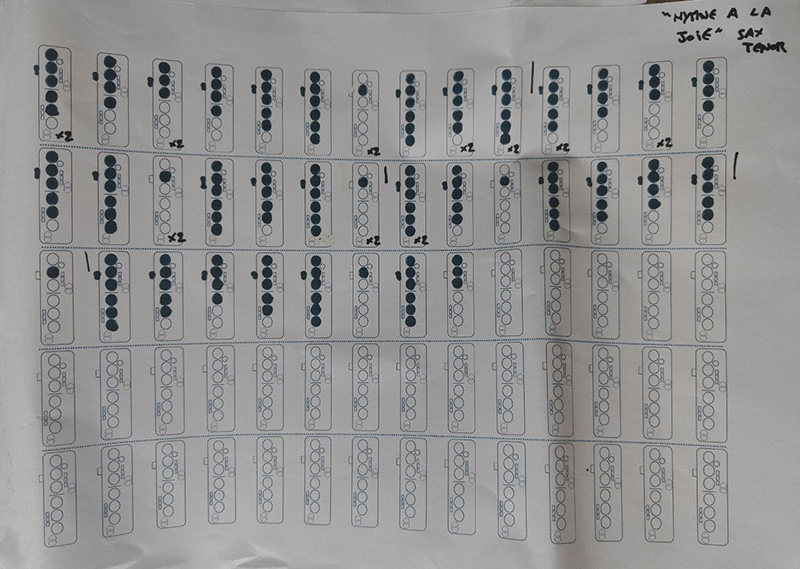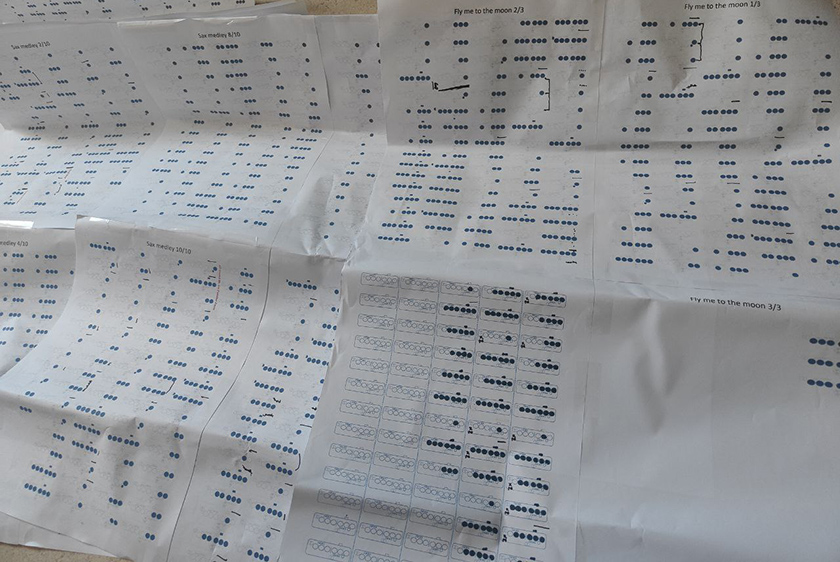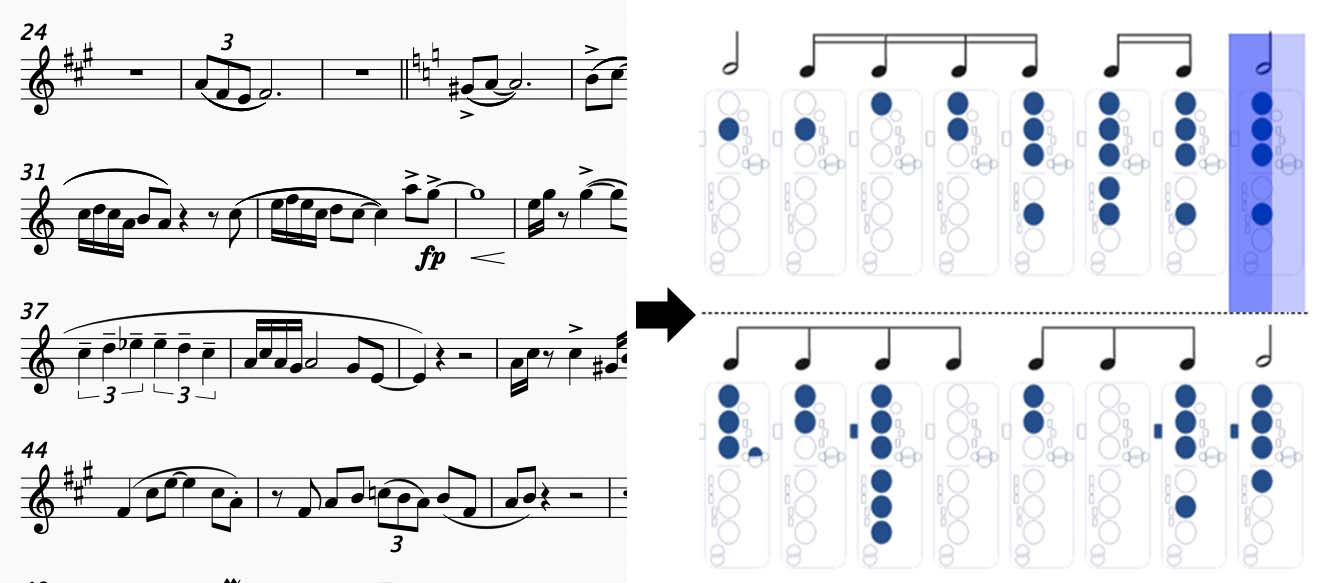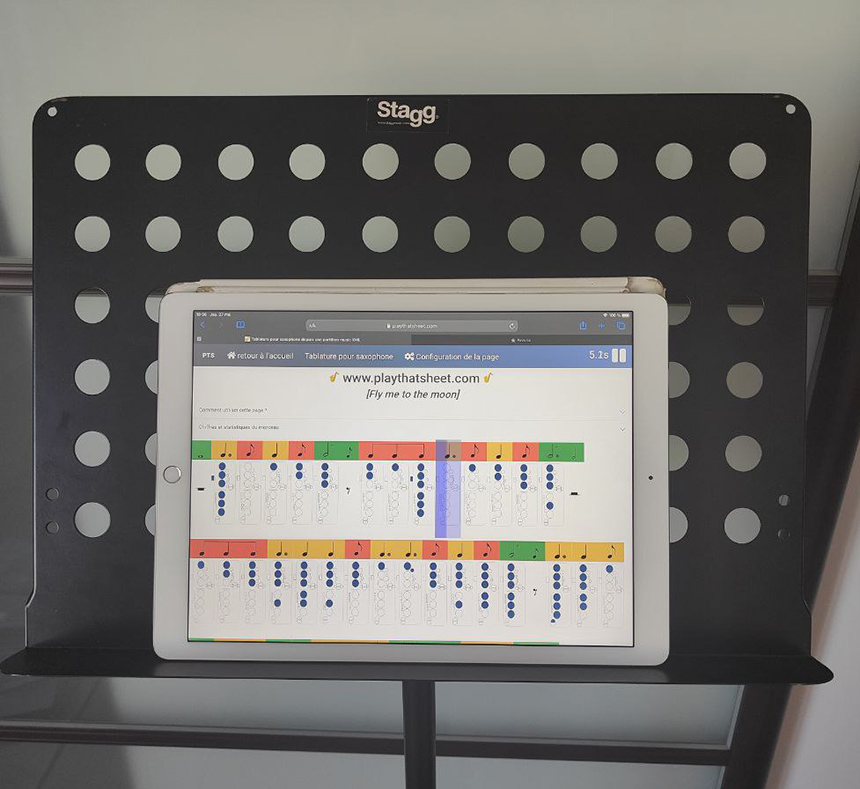Where this idea was born?
Since I watched the movie '37°2 le matin' and listen to the famous track 'betty&zorg' when I was kid, I think I always wanted to play saxophone someday : 'when I will be tall enough'. And one day, after a big day of work during the 2nd lockdown in France I talked to my wife about saxophone for no reason.
As usual, my wonderful wife helped me and reply 'why don't you just buy you a 1st price sax and learn by yourself?'
That's exactly what I've done. I visited thomann.de website and bought a sax Tenor for 600€.
10 days later I received it and I was super excited but there was a big issue : how this golden tube is supposed to work and how do we mount it?
I spent a bit of time on youtube and decide to buy an online course from Yanick Coderre to learn the first steps.
4 days later I was able to blow into this wonderful instrument and create decent basic sounds.
Then I tried to play some kids songs like 'au clair de la lune' or basic scales. Cool, I was playing sax!
Ok, but now I wanted to play real music! Not in orchestra or like a pro nor improvising like Mr Coltrane. I just wanted to play some easy track such as Bella Ciao or Betty&Zorg or even some MarioBross theme music.
This is where the BIG trouble appeared to me : music theory.
I'm almost 40, and I do not want (nor have time to) to spend 6 months learning this music language, and spend hard time decoding notes in a very low pace.
I mean, I was convince that I will need at least 6 months to be able to read an average track music score and play it in real tempo by myself : NO WAY!!!
Did I give up sax? Nope.
As a computer nerd expert, I decided to try to hack this music theory norms and build a system that let me use tablature.
In short, this idea was born on this particular nerd chair you can see on this image.
My 1st draft : a manual sax tablature paper+pen
I started by looking on the web for some saxophone fingering charts and found them quite complex to read quickly.
So I decided to open a powerpoint file, draw some rectangle and circle to create my saxophone 'holes' (later I learnt the good term 'keys'). In short, a big rectangle to define the saxophone and 6 holes. 3 holes at the top for the left hand and 3 at the bottom for the right hand.
As I was still looking and learning a lot of info on youtube (by the way, thanks get your sax together and Yanick Coderre ), I refined my rectangle and circles and add some circle for the palm keys, the octave key and the pinky finger 'keys'.
My first hack attempt was born.
I picked up some easy track like 'pink panther theme' and spent almost 30-40min to decode manually each note and with an A4 page full of empty fingering, I use a pencil and fill the hole for each note (with sometimes big mistakes that I'll discover and fix while trying to play it and recognizing by ear that it didn't sound right).
I totally skip the tempo topic and the rythm of each phrases and I tried to play each note with the same intensity without any subtlity. Classical beginner mistake.
But at the end, I was able to play the pink panther by myself in a bad form, without respecting the rythm, but enjoying the path! And most of all, my kids were able to recognize the track : my 1st big beginner success !
The 1st real paper version (too many paper)
As a computer scientist, I wasn't able to continue wasting 40min per track to decode them from a traditional paper music score to my manual paper&pencil version.
So I decided to ask my computer to help me make some automation and save me these 40min per track.
My 1st real version was a paper version. In short, to not be too technical, I created a script, an algorithm to transform a musicxml music sheet into a list of images representing each fingering note. MusicXML is the open source (id est: free!) format of a music score. This free file that can be edit and read by a computer scientist like me. So I let my algorithm analyze the XML format of a music sheet, extract each notes and pitch like (G5, F6#,C4b,...) and transform these letters into a list of images displayed on a web page.
Then, I was able to make a screenshot of my web page, copy/paste this screenshot in a powerpoint file and print it in A4 format.
Finally, I joined my A4 paper together and tada! my home made music score tablature was born.
My friends was laughting at me as I had like big pieces of paper (A3 or more) to put in front of me before being able to play let's say Ravel-Bolero.
But at the end I was happy, able to play most of musicXML music score and I was able to play (still without tempo and rythms. Sorry for the author and for my neighbors and family that were listening) 'fly me to the moon', 'bella ciao', 'eye of the tiger' and so on. Wow, beginner level 2.0 completed.
My 1st digital version : let's play that sheet in tempo!
Killed by some real musicians friends (thanks Basile and Felipe) that remind me tempo and rythm were not just an option but a bold mandatory concept in music, I worked on it.
My ecological self also beg me to save some trees and find a digital way to read my fingering images instead of printing them several time on paper.
That's what I've done by first digitalizing the fingering on a readable screen.
Each line of fingering was readable and the screen was scrolling automatically when it was required (because playing saxophone and pause to use your hand to scroll down with your mouse computer was not a good habbit)
Then I learnt that music theory, especially for rythm can be written in a lot of ways. 2 'linked' notes can represent a single note played for a longer time. And lot of other weird music theory stuff. Anyway, I've tried to get through that and 'translate' most of the music theory math.
A blue rectangle allowed me to know how long I had to blow in my instrument to maintain the note for the good amount of time and switch to the next note. This rectangle moved to the next note following the tempo written on the original music score.
The algorithm of PlayThatSheet was born!
From that day I've not printed a single paper (thanks for the planet) and I use my ipad pro as my main support to play and read music with my sax!
The last version with some cool automation and setup options!
I was enjoying my everyday self lesson (+ youtube and online courses lessons) to improve my level but I was still stuck with some legendary track such as 'Take Five' (tempo 150 and some complex fingering) !
That's why I decided to add some cool computer automation. On each track fingering page from playthatsheet, I've added a 'page setup' button at the top of the page to let me setup the tempo automatically.
The computer calculate himself the tempo required to play a track (like take five) for a beginner. The tempo is slowed down until the track can be played smoothly (from 150 to 30 or 45 ni this case).
For an easier track such as 'bella ciao', a tempo 50 or 60 is affordable for a beginner and the computer deduce it too.
Damnly cool nope?
I've also added a midi ugly synthesizer to let the human hear the song before playing it with his instrument.
When my kid ask me to play 'hunter x hunter' manga theme, I had to use it as I didn't know this song at all. I first played it with the midi synthesizer and them tried it with my sax. 5min to play it from scratch.
Pretty usefull feature.
From there, I've shared playThatSheet to some friends and then to the world as I received lot of feedbacks saying this tool was damnly cool for beginners and even for more advanced players.
I will soon improve it for clarinet, tuba, flute player as the concept will be easy to code for me.
I'm just waiting for some ginea pig that will ask me that on the contact form of this site so don't hesitate to contact me for that and I'll do it.
I hope you will enjoy PTS (PlayThatSheet) and do not forget that we will still need real sax pro and teacher to learn lot of things that PTS nor music theory can teach us : improvisation,style,embouchure,vibrato,growling,...
I've personnally planned to take some physical teacher lesson by the end of the year.
Enjoy your sax, enjoy playthatsheet and follow me on social networks if you liked the idea and the story.'
